TUMGAD
Exercise generation and helpful materials for the Introduction to Algorithms and Data Structures 📚
(a,b) Trees
(a,b) Trees are self-balancing search structures that allow for nodes with more than one value and child.
Each internal node except the root has at least a
and at most b children where 2 ≤ a ≤ (b+1)/2 and
The root has at most b children.
An Example of a (2,4) tree:
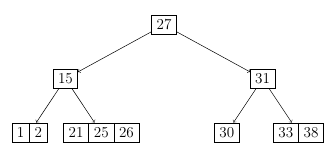
Insertion
Start by adding into the proper leaf node. If the addition causes an overflow (b items), then split and propagate the middle item.
Example: Insert 4 into the tree above: In this case, the insertion is fairly easy, as after we insert the number into the proper leaf, we do not break any invariant:
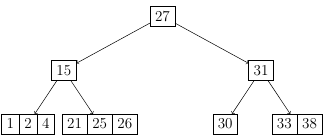
Now if we add, for example, 17, we do break the invariant for the maximum size of a node. Because of this one of the middle nodes, in this case, 25 gets “pushed” into the parent node. And since that now has 2 values, needs 3 children, so the leaf get split into 2 (bigger and smaller than 25):
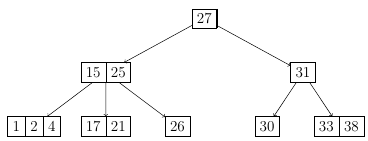
Here is another example with the same process (insert 12):
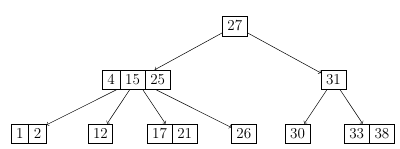
Deletion
After deletion, the invariants have to be honored as well. Consider the following example:
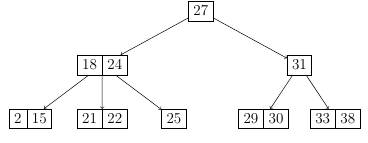
Deleting 29 out of the tree does not hurt any invariant, so we just remove it and we’re done.
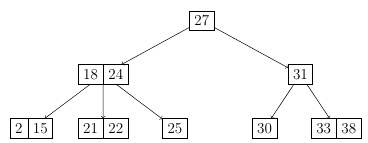
Now, however, if we want to remove 18 it’s slightly different, as 18 is not a leaf, so we have to first switch it with its predecessor (15) and then remove it from the leaf.

It’s possible that an overflow or an underflow appears, and in that case nodes need to be merged to keep the invariant.
Time Complexity:
| Access | Search | Insertion | Deletion |
|---|---|---|---|
O(log n) |
O(log n) |
O(log n) |
O(log n) |